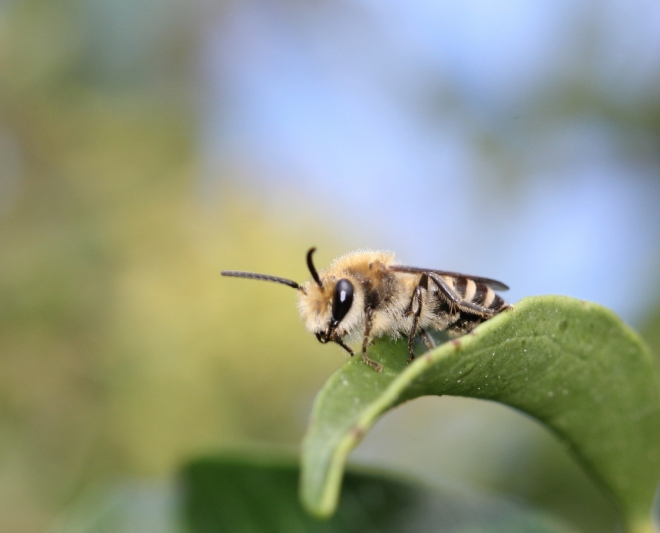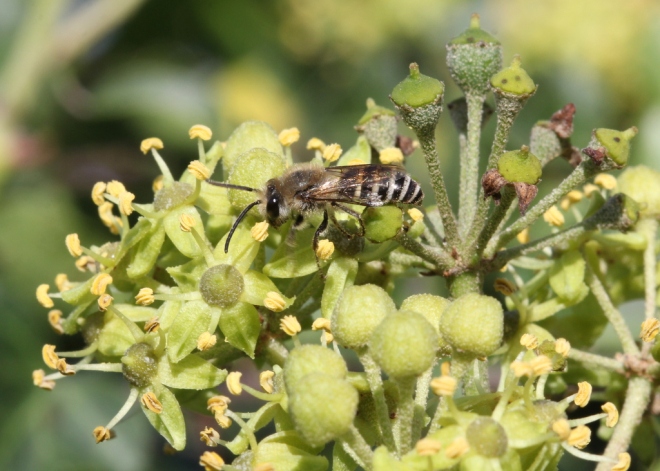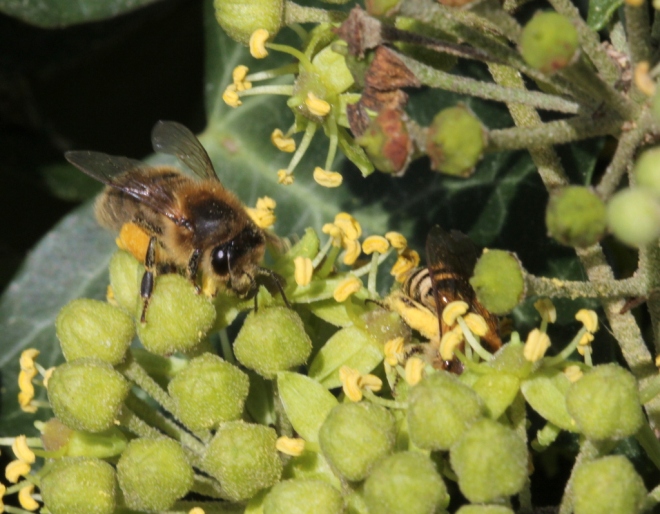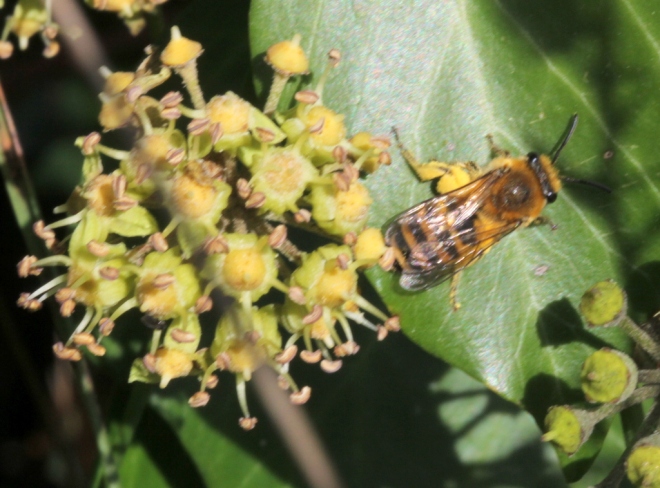My second post is on the last bee of the season that I have seen. I was so thrilled to find him that I used the photo above as the seasonal header for my garden blog a French Garden.
Colletes hederae is also called the Ivy Bee as until recently it was thought to be monolectic on ivy, that is it collected pollen only from ivy. Recents studies examining the pollen loads of C. hederae have shown that it will collect pollen from a variety of different sources.
The males of C. succinctus and C. halophilus are very similar to the male C. hederae so I do not think that either of them will be on the ivy near me. C. halophilus prefers coastal areas and both are more attracted to heathland. I have never found any heather growing nearby so it is not their preferred habitat.
The female is an eye catching bee and can be easily distinguished from the honey bees that are always present on the flowering ivy. She carries the pollen loosely all over her hind legs. In France they can be found between the end of August and the end of October. I took these photographs on a sunny day at the beginning of October.
I have a love hate relationship with ivy. In my garden it will choke all vegetation that stands in its way and for that reason I continually pull it out. Outside in the woods it grows high into the trees providing a wonderful source of nourishment for all kinds of creatures when it flowers at the end of the summer. Never the less it appears to me very invasive in the woods too, lying thick on the ground in many places choking out all competitors.
When the honey bees gather the ivy pollen their sacs have a much more waxy appearance.
Standing beside the ivy in full flower on a sunny day is a heady experience. The perfume from the flowers is intense. Different people describe the perfume as pleasant, of no particular interest or distinctly unpleasant according to their particular sensitivities.
Both the honey bees and the Ivy bees attempt to retrieve the maximum amount of pollen.
The honey bees too carry huge loads of the ivy pollen. It is difficult to imagine them flying back to their hives with such large loads.
Perhaps not all the pollen can be carried back without some being dropped but there is plenty for all.
My regret this year was that I was late in my search for the Ivy bee and I was not sure if the bee was present nearby. C. hederae nests in huge aggregates in the soil and the dry sandy soil of this area would provide an ideal base for nest building – the only problem is where. Now my challenge for next year will be to look out for suitable nesting sites for these late flying bees.









